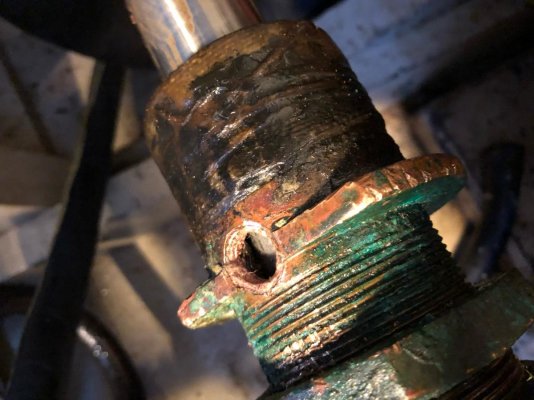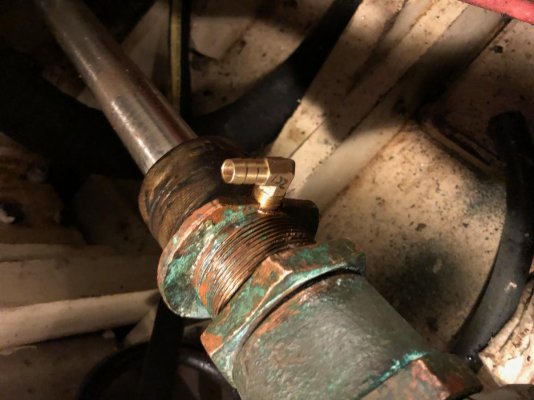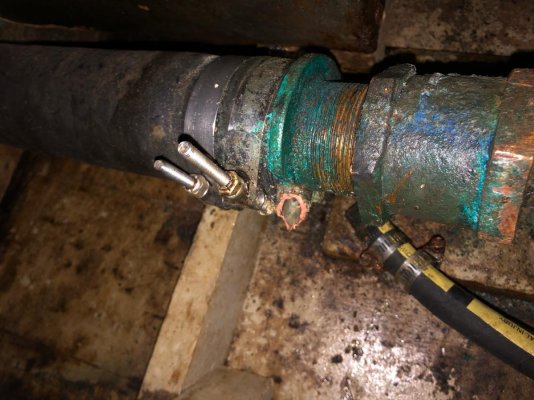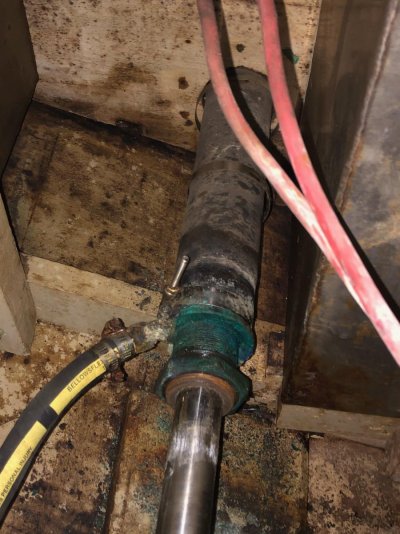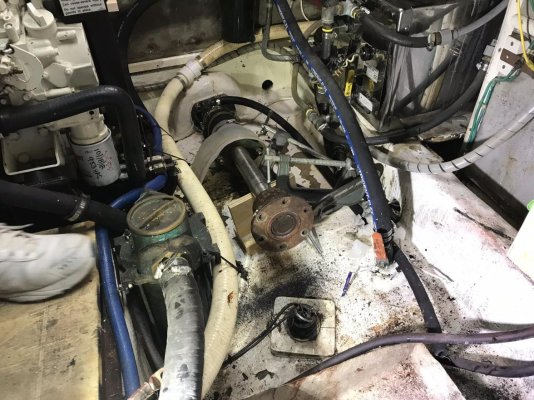Oil Gypsy
Veteran Member
- Joined
- Sep 25, 2019
- Messages
- 53
- Location
- Canada
- Vessel Name
- Dauntless
- Vessel Make
- Grand Banks 36 Classic #248
One of my engines has recently suffered from overheating (under the previous owner) after consulting with a couple of mechanics one of the suggestions was to reduce the diameter of the hose from the salt water cooler to the stuffing box. This would increase the water flow through the coolers and to the exhaust, the original hose was 1/2" and the new hose being 3/8".
While removing the hose fitting from the stern gland it literally collapsed as soon as tension was applied in order to unscrew it. As you can see from the photos the fitting was in terrible condition, boat owners with this arrangement might want to have a close look at their fittings.
I managed to get the remnants of the old fitting out and retap the gland in order to install a new hose fitting but am concerned about the integrity of the stuffing gland, it appears to have suffered from electrolysis over the years with the bronze leaching from the unit, there is definitely a pink tinge to the gland.
My question is, does anyone have any idea where I can order new fittings of the same design, the only ones I can find are of the standard design with no cooling water fitting.
While removing the hose fitting from the stern gland it literally collapsed as soon as tension was applied in order to unscrew it. As you can see from the photos the fitting was in terrible condition, boat owners with this arrangement might want to have a close look at their fittings.
I managed to get the remnants of the old fitting out and retap the gland in order to install a new hose fitting but am concerned about the integrity of the stuffing gland, it appears to have suffered from electrolysis over the years with the bronze leaching from the unit, there is definitely a pink tinge to the gland.
My question is, does anyone have any idea where I can order new fittings of the same design, the only ones I can find are of the standard design with no cooling water fitting.

